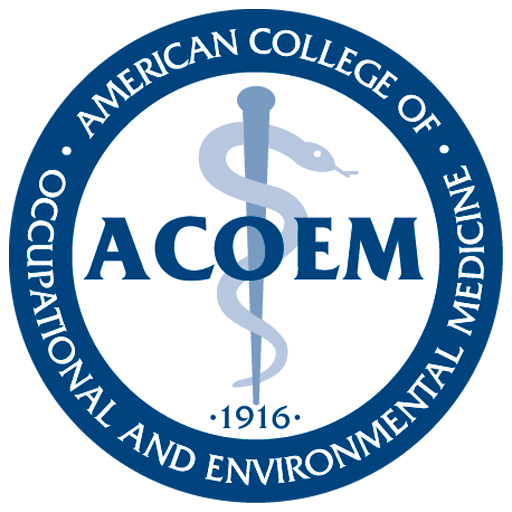
08: Industry Specific Pearls
The petrochemical industry is comparatively new, in existence only since the discovery in 1859 in Pennsylvania of a large enough quantity of crude oil to be of commercial value. Now the industry is measured in the trillions of dollars and significantly affects every facet of modern life, from transportation to clothing and from food to medicine. From the occupational medicine point of view, this giant industry can be separated into two major segments, extraction and processing—each of which presents a number of health risks to their workforces.
- Extraction is the segment of the industry that removes the raw material from the earth—the crude oil or the natural gas—and ships it to the user or the processor.
- Processing is the segment in which crude oil or gas is made into commercial products, including gasoline, diesel, olefins, benzene, toluene, methanol, polyvinyl chloride, and others. These products are eventually used by consumers or burned to generate energy.
Extraction
Oil- and gas-well drilling and servicing activities involve many types of equipment and materials. Recognizing and controlling their hazards is critical to preventing injuries and death. OSHA has recognized these industrial hazards, listed below, and has produced standards and enforcement guidelines for many of them:
- Vehicle collisions: A risk to employees whose worksites are far from home and who travel as a constant work requirement.
- Struck-by/caught-in/caught-between: The cause of many industrial fatalities, these risks particularly affect those working with cranes and oil derricks.
- Explosions and fires: A risk to those working with flammable material.
- Falls: A risk for workers who work at heights.
- Confined spaces: A risk for those who work with tanks, vessels, large pipes, and so on in confined spaces due to the threat of entrapment or gas exposure.
- Ergonomic hazards: A risk for those who work with heavy equipment requiring an unusual body position.
- High-pressure lines and equipment: A risk for workers who work with hydraulics and other pressurized lines.
- Electrical and other hazardous energy: A risk for workers in the vicinity of high-voltage lines.
- Machine hazards: A risk for workers who often operate machines or work closely with moving machines.
Processing
The petrochemical processing industry is made up of refineries and chemical plants. Workers in these facilities tend to live near their workplaces; therefore, commuting and associated risks are minimized. These workers also tend to perform the same familiar tasks on a daily basis, which reduces some risks. However, other risks remain, such as confined spaces, chemical exposures, and falls.
Chemical exposure risks are a special concern for primary care providers, because the consequences may not be acutely or readily apparent. OSHA regulations mandate routine medical surveillance or evaluation, or additional measures related to specific high exposures, for many chemicals. It also requires that employers provide those specific regulations to any medical providers who treat affected workers, to help determine the medical services to offer. Providers should carefully read the applicable medical requirements and regulations and understand that acute exposure incidences may require evaluations beyond routine surveillance. For example, the benzene regulation requires that “if an employee is exposed to benzene in an emergency situation, the employer shall have the employee provide a urine sample at the end of the employee’s shift and have a urinary phenol test performed on the sample within 72 hours.” The vinyl chloride regulation requires liver-function tests to include gamma-glutamyl transpeptidase (GGT). However, providers should exercise due diligence when they interpret laboratory test results. For example, not all elevated urinary phenol results are due to benzene, and the most common cause of elevated GGT is alcohol consumption.
There are also toxic chemicals to which workers may be exposed, such as phosgene and mercury, that surprisingly are not covered by specific OSHA regulations. Providers should understand the route of exposure and the potential for acute as well as delayed toxicity. Understanding the route of exposure can allow a more accurate estimate of the amount of the toxin that has been absorbed. For example, phosgene’s route of exposure is inhalation, and the pulmonary edema may not be apparent until after 24 hours after an acute exposure.
Industry-Wide Safety Measures
The petrochemical industry is understandably concerned with risk not only to individual workers and immediate coworkers but to the surrounding community as well. Workplace errors and incidents can cause significant explosions and environmental damage. Recognizing these added risks, the industry has put hefty resources into place to emphasize safety. One safety-measurement metric that the industry has adopted is the OSHA Recordable Incident Rate—by which companies calculate and report to OSHA their worker injury and incident rates per 100 employees.
In 2012, the U.S. Bureau of Labor Statistics reported the recordable incident rate for the entire manufacturing sector was 3.9 job-related injuries and illnesses per 100 full-time employees. By contrast, the AFPM’s own Occupational Injury & Illness Report recorded 0.5 incidents per 100 full-time employees, for both company employees and onsite contractors working at petroleum-refining facilities. Of these incidents, 79% of injuries were so minor that the worker returned to work immediately.
Given the emphasis by the industry on using the recordable incident rate as an indication of worksite safety, the potential exists for employers to become involved in the diagnosis and/or treatment of an injured employee. For example, managers may ask treating providers to encourage an employee’s early return to work, to avoid ordering unnecessary therapy, to refrain from using prescription medications when over-the-counter equivalents are also appropriate, or to refrain from writing prescriptions “just in case” they are needed later when diligent clinical monitoring would also be appropriate. As described in the OSHA recordkeeping section of this guide, managers may make these requests because certain medical orders and prescriptions will trigger an OSHA “recordable event.” Too many recordable events can make the manager of one site appear to be less effective on safety management than another site manager.
Health care providers must be aware that even subtle differences in the treatments they offer a patient can trigger an incident report or prevent one from being triggered. Providers therefore should be vigilant to make diagnoses based on objective rationales and base treatment recommendations on evidence-based medicine.
